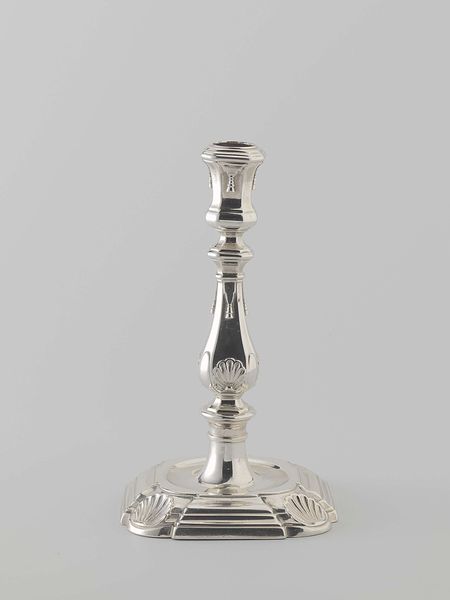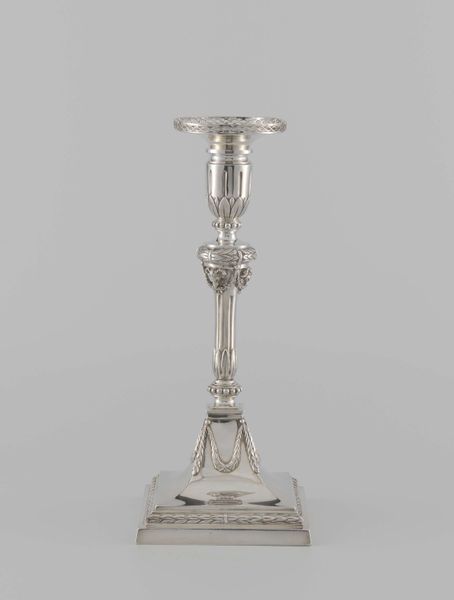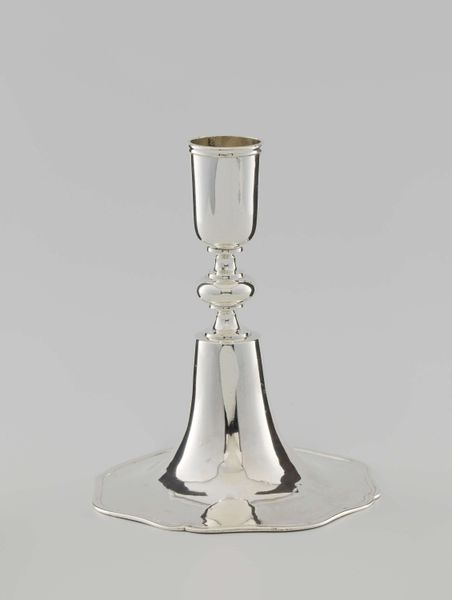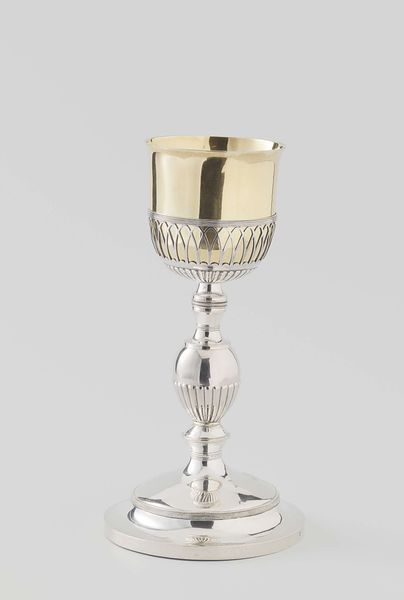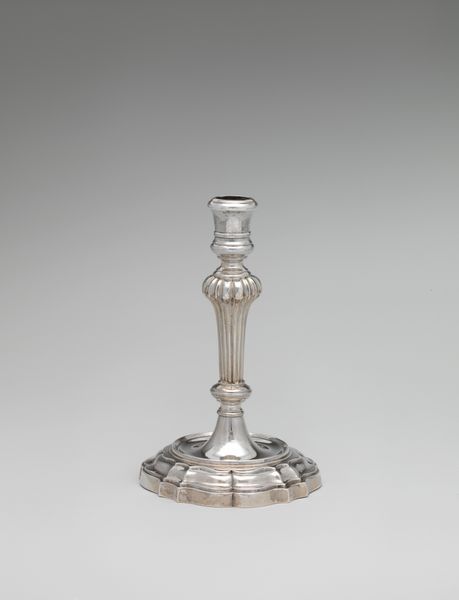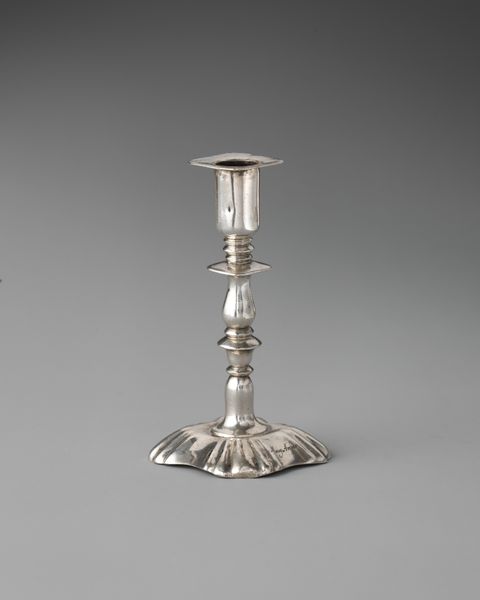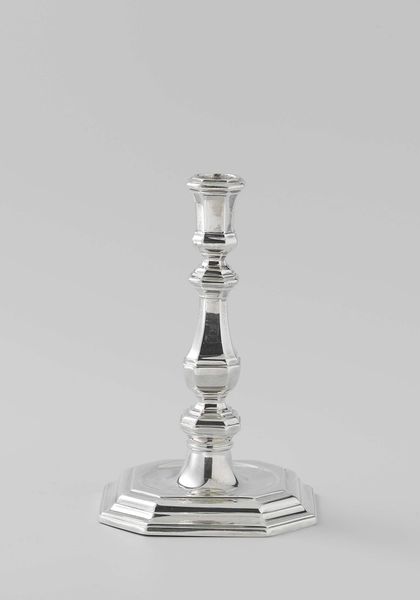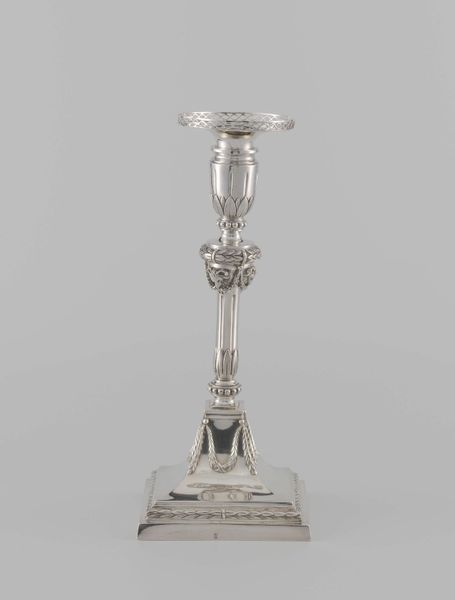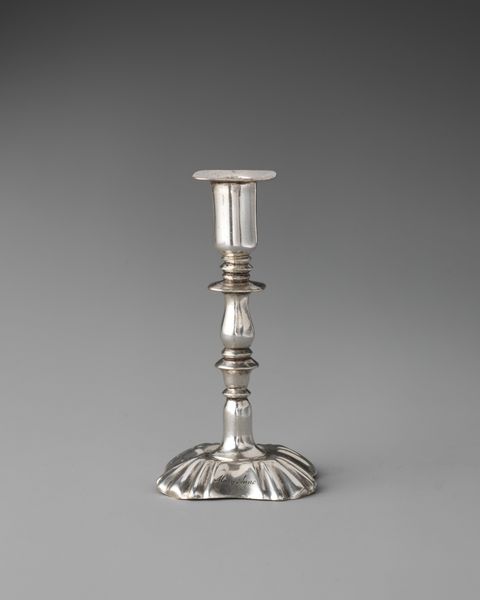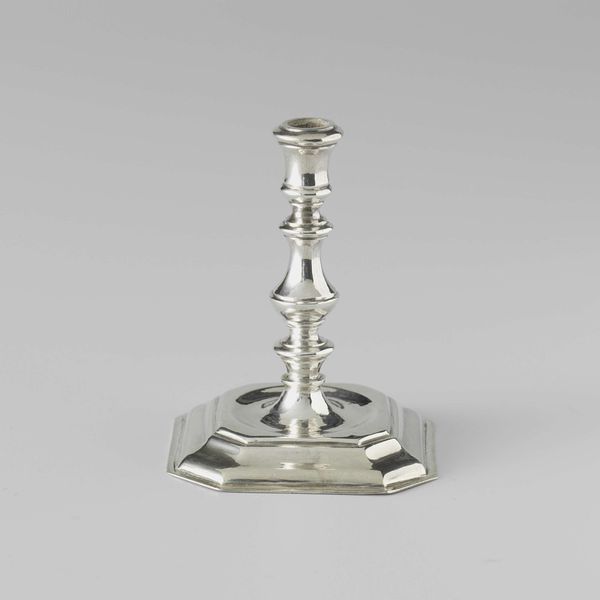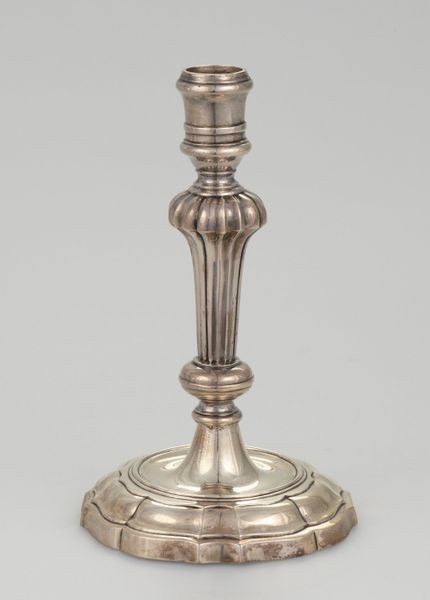
Kandelaar met rond, in zessen gedeeld voetblad dat geleidelijk overgaat in de stam met een schijfvormige nodus. 1725 - 1750
0:00
0:00
silver, metal, sculpture
#
silver
#
baroque
#
metal
#
form
#
sculpture
#
decorative-art
Dimensions: height 23.5 cm, diameter 14.5 cm, weight 355 gr
Copyright: Rijks Museum: Open Domain
This candlestick was made by Papus et Dautun from silver, though the exact date remains unknown. Silver objects like this one can tell us a lot about the labor and social status of those involved in its creation and ownership. The candlestick's smooth, reflective surface results from skillful metalworking. Silver, in its raw form, doesn't just appear like this. It requires mining, smelting, and refining, processes often involving harsh labor conditions. Silversmiths then shape the material, using techniques like hammering, casting, and polishing to achieve this elegant form. The ridges and the nodus are all about controlled manipulation of the metal. The value of silver objects isn't just in the material but also in the intensive work that goes into them. Owning such an item was a display of wealth, reflecting the ability to afford both the material and the skilled labor required to transform it. Considering the making of this object reminds us to appreciate the skill, labor, and social context embedded within it, and the complex relationships between design, production, and consumption.
Comments
No comments
Be the first to comment and join the conversation on the ultimate creative platform.

